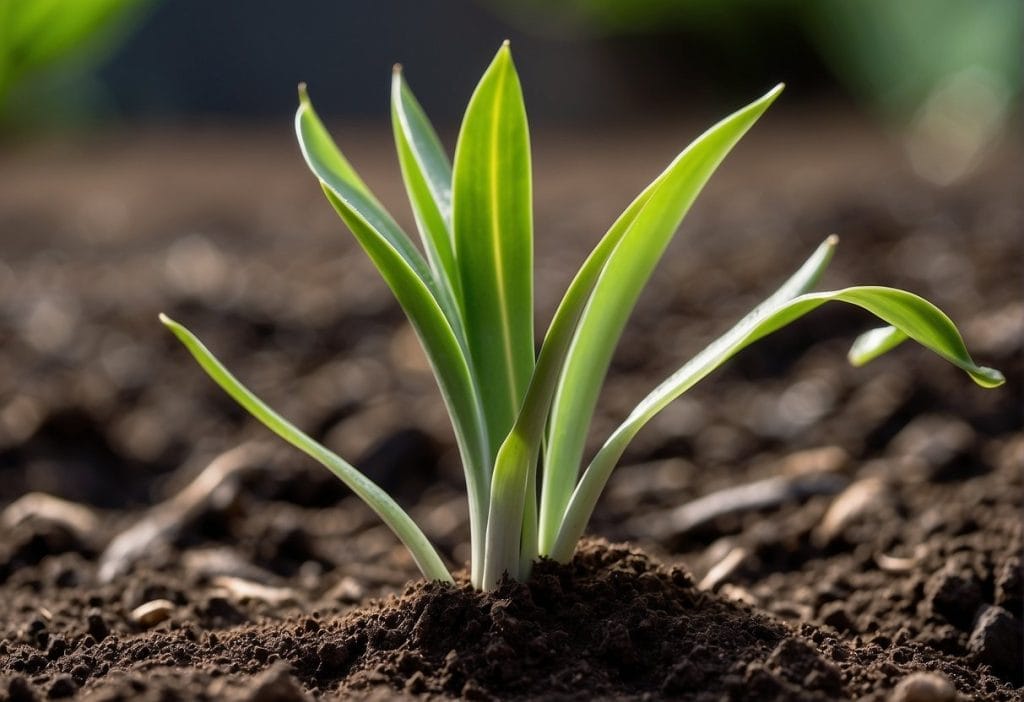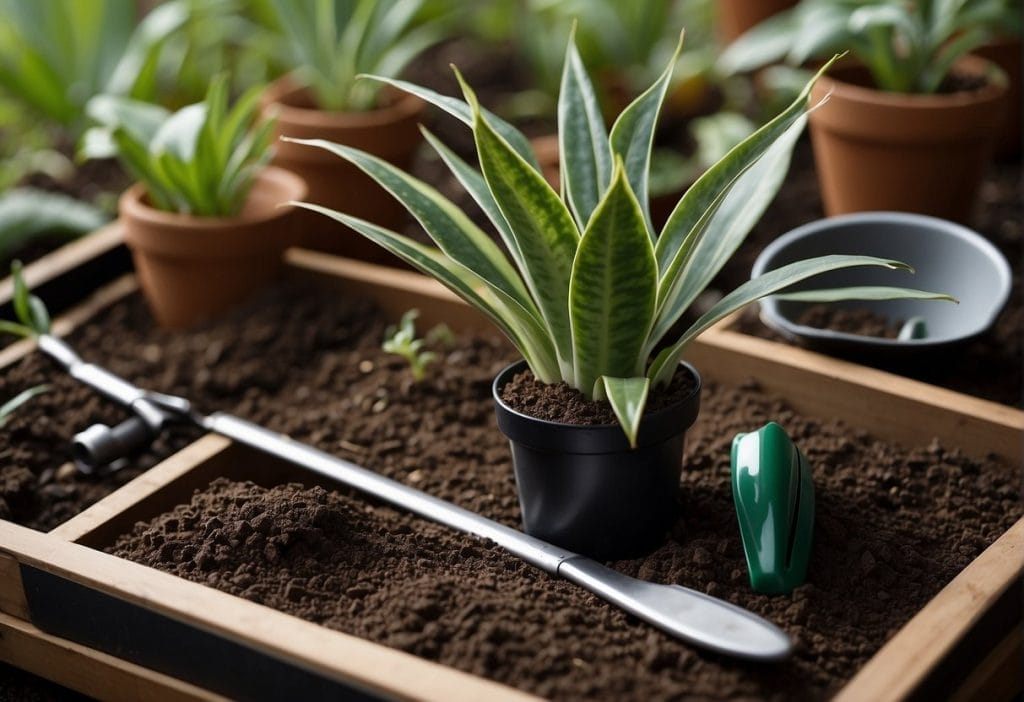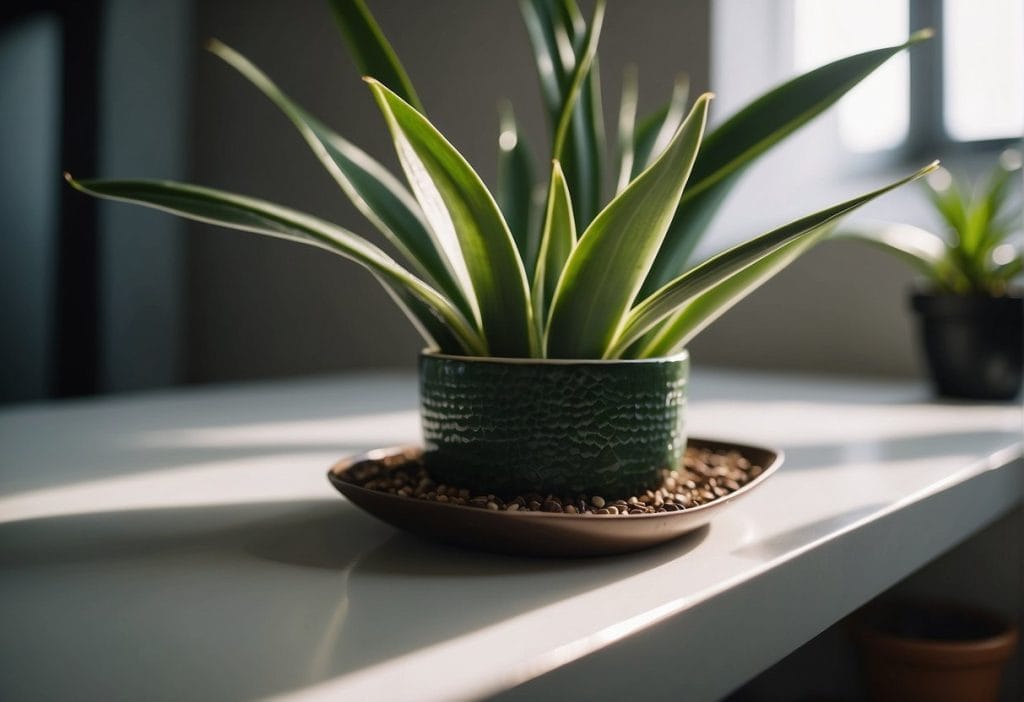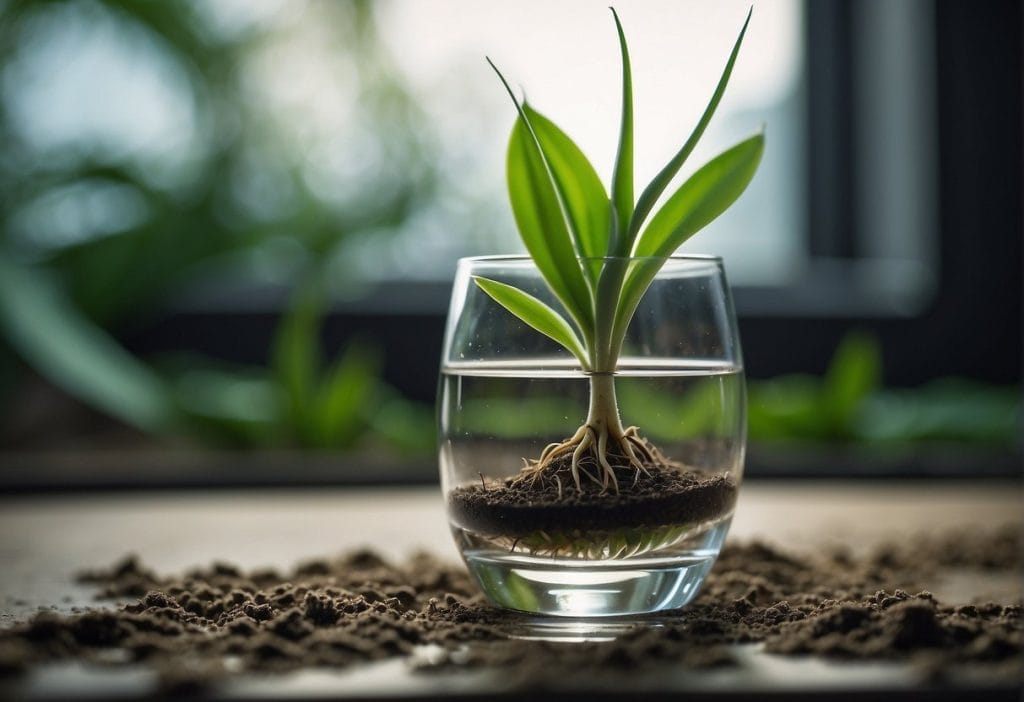How to Propagate a Snake Plant with a Single Leaf: Expert Techniques for Success
Snake plants, also known as Sansevieria or mother-in-law’s tongue, are a popular choice for indoor spaces due to their low-maintenance nature and air-purifying abilities. Dracaena trifasciata, the scientific name for snake plants, are native to West Africa and known for their striking, sword-like leaves. Propagating a snake plant using a single leaf cutting is an excellent method to multiply your collection, and it is quite simple to do.

To propagate your snake plant, you’ll need a healthy leaf from an existing plant. Make sure you select a leaf that is free of damage and has proper growth. Keep in mind that propagating using this method may not produce an exact clone of the parent plant, as the new plants may have variations in their patterns and colors. However, the technique is an effective and affordable way to increase your snake plant family.
Once you have the leaf cutting, you can choose different propagation methods such as propagating in water or directly in soil. Regardless of your chosen method, provide the right environmental conditions to support proper growth, including indirect light and a proper temperature range. With patience and the right care, you can expect new growth from your single snake plant leaf cutting in just a few weeks.
Understanding Snake Plant Propagation

Types of Propagation Methods
Snake plant propagation can be achieved through several methods, each with its own set of steps and considerations. Here are the main methods you might use:
- Division: This method involves separating a mature snake plant into multiple smaller plants, each with its own root system. Division is ideal for propagating larger snake plants that have grown too big for their current container.
- Leaf cuttings in soil: For this method, you take a healthy leaf from the plant and cut it into smaller sections. Make sure each section has a portion of the leaf and some of the base attached. Allow the cuttings to dry and callus for a few days before planting them in well-draining soil.
- Leaf cuttings in water: This method is similar to leaf cuttings in soil, but instead of planting the sections in soil, you place them in water. Monitor the water level and change it regularly to prevent rot.
- Propagation from rhizome: In this method, you’ll use the snake plant’s rhizomes to create a new plant. Gently remove a section of rhizome from the main plant, ensuring that it has roots attached, and place it in a pot with well-draining soil.
Best Time for Propagation
The best time to propagate your snake plants is during their active growth period, typically in the warmer months between spring and summer. During this time, the plant will have ample energy to devote to creating new roots and shoots. Propagating during the dormant season (late fall to winter) can result in slower growth and an increased risk of rot.
When picking a leaf for propagation, look for a healthy, dark green leaf that is at least 6 inches (15 cm) tall. Avoid leaves with brown spots or signs of aging, as these may not produce successful new plants.
In summary, make sure to choose an appropriate propagation method based on the size and condition of your snake plant, and propagate during the active growth period to increase your chances of success. Happy propagating!
Preparing for Propagation

Selecting the Right Leaf
Before beginning the propagation process, it’s crucial to choose a healthy snake plant leaf. Look for a leaf that is at least 6 inches (15 cm) tall and dark green in color. Avoid using leaves that are browning, as this is a sign they are getting old and may not successfully propagate. A strong, healthy leaf will increase the chances of successful propagation.
Tools and Materials Needed
To propagate a snake plant leaf, gather the following tools and materials:
- Pruning shears or a sharp knife: These are essential for making a clean cut when removing the leaf from the parent plant. A clean cut helps prevent infection and allows for better rooting.
- Rooting hormone (optional): While not necessary, applying rooting hormone to the cut end of the leaf can encourage quicker root development.
- Potting mix: A sandy, well-draining potting mix is ideal for snake plant propagation. The mix should contain a combination of perlite, coarse sand, and peat moss to provide the right balance of moisture and aeration.
- Container with drainage holes: A small pot or container with drainage holes will ensure that excess water can escape, preventing root rot.
- Water: Tepid or lukewarm water is best for filling the container and moistening the potting mix.
Once you have gathered the necessary tools and materials, you’re ready to propagate your snake plant leaf. By following the appropriate steps and taking care to maintain the right environment for your new plant, you’ll have a thriving new snake plant in no time.
Step-by-Step Leaf Cutting Propagation

Cutting the Leaf
Choose a healthy snake plant leaf that is at least 6 inches (15 cm) tall and dark green. Using a clean, sharp knife or pruning shears, cut the leaf off near the soil at the base. Be sure to cut at a 45-degree angle to ensure the best possible chance for successful propagation. Label the top part of the cutting to avoid planting it upside down, as this will hinder root growth and may cause rotting.
Callousing the Cuttings
After cutting the leaf, allow the cut end to dry and form a callous. This process usually takes between 2 to 5 days. Callousing is essential as it helps prevent rotting and promotes successful rooting. Make sure to keep the cuttings in a dry and shaded area during this time.
Rooting in Soil or Water
For soil propagation, prepare a potting mix consisting of a well-draining soil, such as a mix of cactus soil and perlite. Place the calloused end of the cutting into the soil mix gently, about an inch deep. Keep the soil lightly moist but not wet, and place the pot in a bright spot with indirect light.
| Method | Pros | Cons | Maintenance |
|---|---|---|---|
| Soil | Sturdier roots | Slower growth | Water lightly, keep in indirect light |
| Water | Faster growth | Delicate roots | Change water weekly, indirect light |
For water propagation, place the calloused end of the cutting into a glass filled with a few inches of water. Be sure to ensure that only the bottom portion of the cutting is submerged in water. Place the glass in a bright spot with indirect light and change the water weekly to maintain its cleanliness.
Once you see your cuttings developing a substantial root system in either soil or water, they can be transplanted into their permanent homes, ideally with well-draining potting soil. Remember to provide your new snake plants with the proper care, including appropriate lighting, watering, and temperature conditions for optimal growth.
Caring for Propagated Snake Plants

Proper Watering Techniques
When it comes to watering your propagated snake plant, moderation is key. Water sparingly, as overwatering can lead to root rot. Ensure your chosen container has drainage holes for excess water to escape. It’s advisable to use terracotta pots, since they allow better air circulation and help prevent overwatering.
Here’s a simple watering routine for your snake plant:
- Water thoroughly, allowing water to drain through the drainage holes.
- Wait until the soil is almost completely dry before watering again.
- Repeat the process, ensuring the plant is never left sitting in water.
Remember, it’s better to underwater than overwater your snake plant to avoid root rot.
Light and Temperature Requirements
Snake plants thrive in various lighting conditions, but bright indirect light is optimal. They can tolerate low light as well, making them suitable for rooms with limited natural light. However, keep them away from full sun to avoid scorching their leaves.
Here is a table summarizing their light and temperature preferences:
| Condition | Preference |
|---|---|
| Bright Indirect Light | Optimal for growth and variegated forms |
| Low Light | Tolerable, but may lead to slower growth |
| Full Sun | Not recommended, may cause leaf scorching |
As for temperature, snake plants prefer a range of 70-90°F (21-32°C). To maintain a healthy environment for your propagated plant, avoid placing it near heating or cooling vents, as sudden temperature fluctuations can be detrimental.
By providing your propagated snake plant with proper watering techniques and suitable light and temperature conditions, you’re setting it up for success in its new home.
Troubleshooting Common Issues
In this section, we will address common issues that may arise during the propagation process of a snake plant with a single leaf. We will provide clear and concise solutions to help you overcome these challenges.
Dealing with Rot
Rot can be a significant issue, especially when propagating a snake plant in water or soil. Some signs of rot may include a blackened leaf base or a foul smell. Here are some steps you can follow to avoid and manage rot:
- Choose healthy parent plants: Make sure to select a healthy and disease-free snake plant leaf for propagation.
- Check the soil: Ensure the soil used for propagating is well-draining and not overly compact, which would promote water stagnation and eventually rot.
- Monitor watering: Overwatering is the leading cause of rot. Water your new snake plant sparingly to avoid excessive moisture in the soil. Allow the soil to dry out between waterings.
If you do encounter rot, remove the affected parts using a clean and sanitized tool and follow the above steps to prevent further issues.
Growth Problems
Sometimes, you may experience slow or stunted growth during propagation. Here are a few potential reasons and solutions for this issue:
- Not enough light: Snake plants require adequate lighting for proper growth. Ensure your plant is placed in a location with bright, indirect light.
- Nutrient deficiency: Lack of nutrients can cause slow growth in your propagating snake plant. When transferring the cutting to soil, consider adding a slow-release fertilizer to promote strong growth.
Remember to be patient during the propagation process. Growing a new snake plant from a single leaf can take time. By keeping these tips in mind, you can successfully propagate your snake plant and enjoy its beauty and resilience for years to come.
Conclusion
Using a single leaf for propagating your snake plant is a low-maintenance and efficient method to create more healthy plants. The flexibility of this approach allows you to choose from various propagation methods, such as in water or soil, according to your preferences and available resources.
One of the most popular methods is propagating snake plants in water, which allows you to observe root growth directly. To successfully accomplish this, follow these simple steps:
- Choose a healthy snake plant leaf.
- Cut the leaf at the base, as close to the soil as possible.
- Cut the leaf into 2-3 inch sections, ensuring the right orientation (top and bottom).
- Place the bottom cuttings in a jar filled with clean water.
- Change the water every few days.
Another low-maintenance propagation method is directly planting leaf cuttings in soil. Follow these steps:
- Choose a healthy snake plant leaf.
- Cut the leaf at the base, as close to the soil as possible.
- Cut the leaf into 2-3 inch sections, following the right orientation (top and bottom).
- Place the bottom cuttings in well-draining soil.
- Water sparingly to avoid overwatering.
With these methods, you’ll be able to transform a single leaf into multiple thriving plants, perfect for decorating your living space or sharing with friends and family. This hardy and low-maintenance houseplant will undoubtedly enhance your environment.
For any remaining questions, check the frequently asked questions on propagation topics to help ensure success in growing your new healthy snake plants. Remember, patience is essential, as it will take several weeks for the new roots to develop. Happy propagating!







